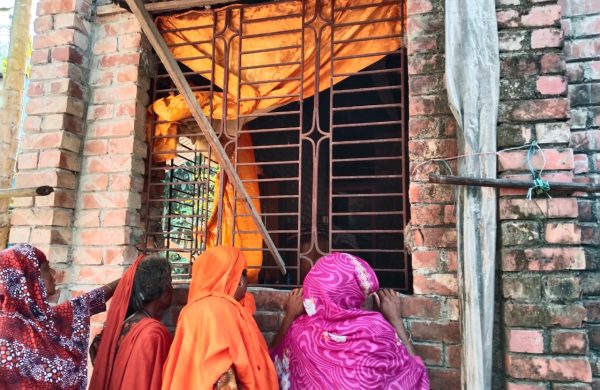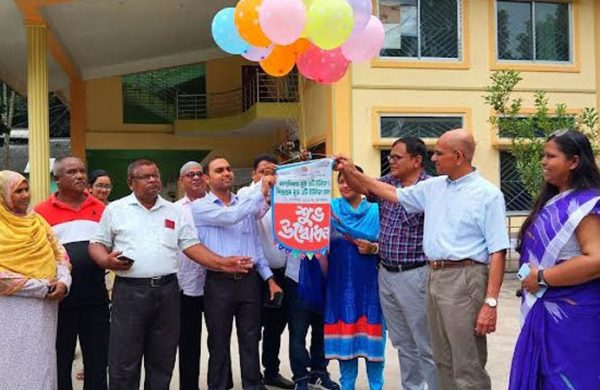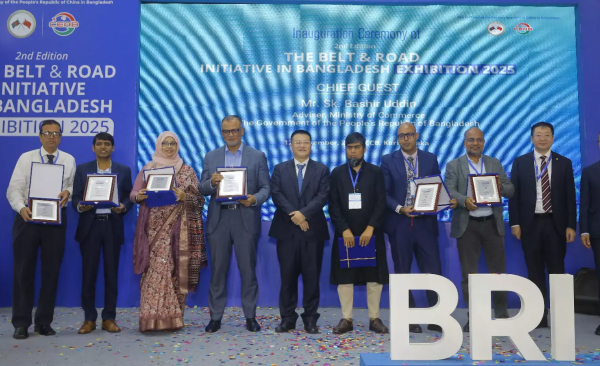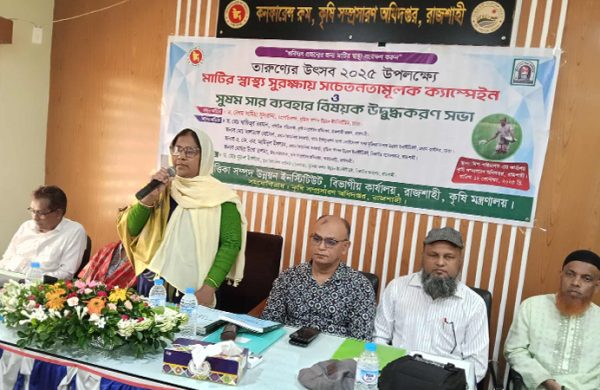Why is chikungunya rising in Bangladesh?
- Update Time : Thursday, July 17, 2025
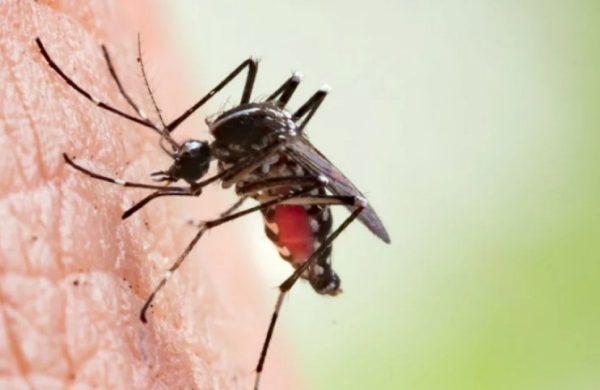
—Anwar Hossain Chowdhury—
Hospitals and clinics throughout Bangladesh, especially in Dhaka and other large cities have seen a startling increase in patients with high fever, joint pain, rash, and exhaustion — all of which are typical signs of chikungunya fever — in recent months. Chikungunya, which was once thought to be a rare tropical disease, is quickly becoming a threat to public health in Bangladesh.
But what exactly is behind this abrupt and dramatic rise? The answer is complicated and tells a more nuanced tale of systemic neglect in disease surveillance, urban chaos, climate volatility, and paralysis in governance. This is about more than just a single virus; it is about the ideal environment we have created for these illnesses to flourish.
THE SETTING THAT ENCOURAGES OUTBREAKS
Above all, Bangladesh’s shifting climate is what has contributed to the development of an environment conducive to the spread of chikungunya. Warm, humid weather is ideal for the Aedes mosquito, which spreads the dengue and chikungunya viruses. This mosquito’s breeding season and geographic range have been extended by longer monsoons, higher average temperatures, and more urban flooding. The vector is now active all year round, not just during the monsoon season, unlike in the past. What used to be a seasonal issue is now a continuous danger. Furthermore, Aedes mosquitoes find perfect breeding grounds in urban areas due to stagnant water left over from poor drainage. In practically every neighborhood, plastic containers, flower pots, abandoned tires, and rooftop tanks have turned into tiny disease reservoirs.
UNPLANNED GROWTH AND URBAN CHAOS
The effects of unplanned urbanization are being felt in Bangladesh’s fast-expanding cities, including Dhaka. Disease outbreaks are usually aided by overcrowded slums, informal housing, and malfunctioning waste and sewage systems. Chikungunya is ingrained in urban dysfunction and is not merely a problem in rural areas or slums. Rich neighborhoods with air-conditioned apartments and rooftop gardens are breeding grounds for the same mosquitoes. Both the rich and the poor are affected by this equal-opportunity epidemic, but the poor are disproportionately affected because they lack timely access to healthcare.
INADEQUATE GOVERNANCE AND WEAK VECTOR CONTROL
Bangladesh’s vector control measures are still insufficient and primarily reactive in spite of numerous cautions from medical professionals. Once an outbreak has started, fogging machines are introduced, frequently with antiquated chemicals that mosquitoes have become resistant to. Campaigns for community awareness are introduced late and have a small audience. Additionally, city corporations, health departments, and environmental agencies do not coordinate well. In many places, it is unclear who is in charge of drainage maintenance, garbage disposal, or mosquito control, which leads to bureaucratic finger-pointing as the disease spreads. In and of itself, the chikungunya virus is not new. In South Asia, it has been in circulation for many years. However, recurring outbreaks in Bangladesh indicate more than just an epidemiological event– they also point to a governance failure.
INADEQUATE HEALTH INFRASTRUCTURE
The lack of a clear diagnosis in the chikungunya crisis is among its most annoying features. Rapid diagnostic kits are absent from the majority of government hospitals. Patients are frequently misdiagnosed with “viral fever” or dengue. Many cases go unreported as a result of this diagnostic gap, and we don’t have access to real-time data to gauge the outbreak’s scope. Moreover, chikungunya has no particular treatment. In addition to being told to rest, patients are prescribed paracetamol. However, the severe joint pain, exhaustion, and persistent weakness can persist for weeks or even months, resulting in missed work, lost income, and psychological distress, particularly for those who earn a low daily wage.
THE PUBLIC IS LEFT IN THE DARK
Chikungunya is still surprisingly unknown to the general public. The majority of people are unable to distinguish between dengue, chikungunya, and other diseases spread by mosquitoes. To inform the public about symptoms, prevention, and when to seek help, the government has not implemented a consistent, science-based communication strategy. This ignorance causes needless anxiety, inappropriate self-medication, and treatment delays. Even worse, it spreads false information. Conspiracy theories and pseudoscientific cures abound on social media, further eroding public confidence in medical establishments.
WHAT MUST BE DONE
Bangladesh cannot afford to ignore chikungunya as a passing annoyance. This outbreak ought to serve as a warning. Not only to eradicate mosquitoes, but also to repair the mechanisms that allow them to thrive. It needs to be addressed as a systemic public health issue. THIS IS WHAT NEEDS TO BE ALTERED:
- Integrated vector control: Rather than relying solely on seasonal fogging, invest in year-round mosquito control initiatives. Utilize scientific entomological surveillance to monitor patterns of resistance and vector density
- Urban reform: Waste management, drainage repair, and the control of impromptu urban development must be given top priority by municipalities. These are public health priorities rather than merely infrastructure problems
- Improved diagnostics: Provide chikungunya testing kits to primary health facilities and instruct medical staff in data reporting and case identification
- Public awareness: To inform people about prevention, symptoms, and early treatment, start long-term, multilingual campaigns utilizing TV, radio, social media, and community health workers
- Climate adaptation in health policy: Acknowledge the climate sensitivity of vector-borne illnesses. To predict and stop outbreaks, environmental data must be incorporated into future public health planning
There is a reason why chikungunya is becoming more prevalent in Bangladesh. It is a result of our ecological neglect, reactive governance, and disjointed urban planning. Chikungunya and other vector-borne illnesses will continue to spread rapidly throughout our population unless we address their underlying causes.
——————————————————————————-
Dr Anwar Hossain Chowdhury is Assistant Professor, Bangladesh Institute of Governance and Management (BIGM). He can be reached at [email protected].








